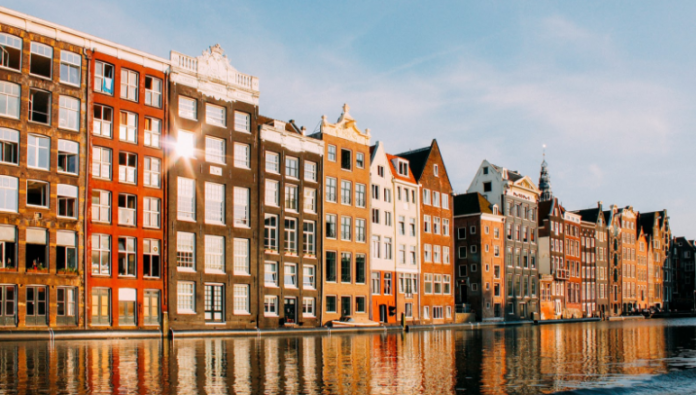As we have seen in the previous posts of this series on online alternative finance, the sector in Europe is growing very well, with a growth of 92% year on year, reaching €5.4 billion in 2015. While it’s not a big surprise to see that the UK remains the largest AltFi market in the area, followed by France and Germany, it’s the Netherlands, that will be analyzed here, that’s more unexpected, given its small size, to be ranked just after these countries. But let’s now look at facts and figures.
As stated above, despite its 17 million inhabitants, the Netherlands is the fourth largest European country by market volume with €111 million, in the AltFi sector. It’s preceded by Germany, that was analyzed last month here, and which is totaling €249 million, and France, inspected here, that excluding the UK, is the biggest market with €319 million.
The online alternative finance market volumes in the Netherlands at a good pace in the past two years, with a 70% increase from 2013 (€46 million) to 2014 (€78 million) and by 42% in 2015, reaching a total volume of €111 million.
 (Source: Page 50 of ‘Sustaining Momentum’ – the 2nd European Alternative Finance Industry Report by the Cambridge Centre for Alternative Finance (CCAF) of the University of Cambridge Judge Business School).
(Source: Page 50 of ‘Sustaining Momentum’ – the 2nd European Alternative Finance Industry Report by the Cambridge Centre for Alternative Finance (CCAF) of the University of Cambridge Judge Business School).
However what’s more surprising it’s not the total amount of money flowing in the online AltFi market, but it’s market volume per capita. The Netherlands has by large the highest number among the top region and countries for alternative finance, with €6.53 per capita, that’s more than the double of the German figure (€3.05) and around thirteen times the amount per capita for Italy (€0.53).
 (Source: Page 50 of ‘Sustaining Momentum’ – the 2nd European Alternative Finance Industry Report by the Cambridge Centre for Alternative Finance (CCAF) of the University of Cambridge Judge Business School).
(Source: Page 50 of ‘Sustaining Momentum’ – the 2nd European Alternative Finance Industry Report by the Cambridge Centre for Alternative Finance (CCAF) of the University of Cambridge Judge Business School).
Looking instead at the data divided by sub-sectors, it’s clear also at a first sight, that is peer-to-peer business lending (P2P business lending) the most popular model in the Netherlands, with a volume of €74m and a growth of 34% year on year. This made it not only the highest volume internally, but it also places the Netherlands in the first position for P2P business lending in Europe (excluding the UK). A clear peculiarity of AltFi market this country is to see no presence and contribution of the consumer side of P2P lending, which is actually the model type with the largest transaction volume in Europe.
 (Source: Page 59 of ‘Sustaining Momentum’ – the 2nd European Alternative Finance Industry Report by the Cambridge Centre for Alternative Finance (CCAF) of the University of Cambridge Judge Business School).
(Source: Page 59 of ‘Sustaining Momentum’ – the 2nd European Alternative Finance Industry Report by the Cambridge Centre for Alternative Finance (CCAF) of the University of Cambridge Judge Business School).
After P2P business lending, is equity crowdfunding the second largest model, with a transaction volume of €16.6m and growth of 49% from 2014. It’s otherwise reward based crowdfunding the model growing faster, accounting for €11.2m in 2015 with a 153% increase on the year before.
 (Source: Page 62 of ‘Sustaining Momentum’ – the 2nd European Alternative Finance Industry Report by the Cambridge Centre for Alternative Finance (CCAF) of the University of Cambridge Judge Business School).
(Source: Page 62 of ‘Sustaining Momentum’ – the 2nd European Alternative Finance Industry Report by the Cambridge Centre for Alternative Finance (CCAF) of the University of Cambridge Judge Business School).
It’s nice to see as well how satisfied Dutch firms apparently are about their alternative finance regulation (a new crowdfunding decree entered into effect on April 1, 2016), with 57%, of those surveyed seeing the current regulation as adequate and appropriate. An approbation rate that reaches an impressive 76%, by looking at the proposed national regulation, making the highest level of satisfaction among the European countries taken into consideration in the report.
It’s apparently impossible to not be optimistic about the potential of the AltFi market in the Netherlands even if the small size of the country, remain a concern for the national firms that need to scale. The development of an effective infrastructure for fintech and of the EU market as a whole, is therefore fundamental for the acceleration of the local online alternative finance sector.




